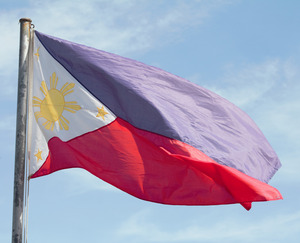 The Philippines is made up of 7000+ islands, organised into six major groups. Their geographic location within the Pacific Ring of Fire, makes the country prone to extreme natural disasters. In the two weeks before we left, a large ferry had capsized, a typhoon had left 100+ dead and a shopping mall had caught fire. So, it was no surprise, that during our two-month stay, we had the threat of a volcanic eruption and an unseasonal tropical storm. This linked to President Duterte’s war on drugs and the threat of tourist kidnappings on the island of Mindanao, have not made the Philippines the first choice for travelling in South East Asia.
The Philippines is made up of 7000+ islands, organised into six major groups. Their geographic location within the Pacific Ring of Fire, makes the country prone to extreme natural disasters. In the two weeks before we left, a large ferry had capsized, a typhoon had left 100+ dead and a shopping mall had caught fire. So, it was no surprise, that during our two-month stay, we had the threat of a volcanic eruption and an unseasonal tropical storm. This linked to President Duterte’s war on drugs and the threat of tourist kidnappings on the island of Mindanao, have not made the Philippines the first choice for travelling in South East Asia.
History
Unlike its neighbours, the Philippines has been shaped by western influencers: the Spanish, who ruled the country from 1521 for 300 years, and more latterly, the Americans, from the turn of the 19th century until World War 2. Both left legacies: Catholicism as the main religion and English as the national language, which makes it user-friendly for western travellers. As a result, the Philippines has a strong Asian grounding, overlaid with Spanish colonial architecture rounded off with the American approach to life.
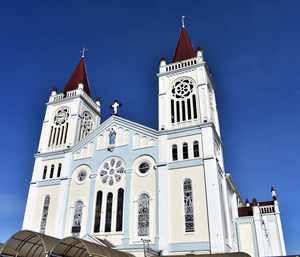 Because of their history, we found the Filipinos to be phlegmatic and positive. The mountain tribes resisted the ways of their colonisers and kept their identity for much longer, and still today in north Luzon, the individual highland tribes are proud of their heritage.
Because of their history, we found the Filipinos to be phlegmatic and positive. The mountain tribes resisted the ways of their colonisers and kept their identity for much longer, and still today in north Luzon, the individual highland tribes are proud of their heritage.
As Catholics, Filipinos have large close-knit extended families and a strong sense of friendship. As they like to travel together, weekends can be impacted by large groups of locals and we often found this overwhelming. In addition, they love music and are never far from a loud radio.
Filipinos are noted for their hard work particularly in the service, cleaning and caring industries. 10% of the workforce are employed abroad, mainly in the US and Saudi Arabia, and return $30bn annually into the economy. Therefore, they’re highly respected and have a special Immigration channel ‘WFA – Workers From Abroad’. Their language skills also make them a major call centre location.
Climate
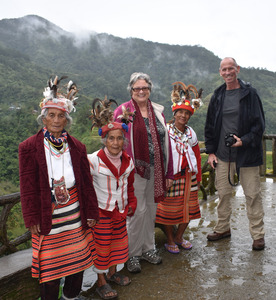 January to March was said to be the best time to visit but we still encountered sporadic rain and heavier rain when Tropical Storm Basyang hit the Philippines, which caused one of our trips to be cancelled. However, day-time temperatures were often in the low thirties, but when at altitude, evenings required a warm top (which was also useful for arctic air conditioning in restaurants and when travelling). High levels of humidity, coupled with traffic pollution, created city smog, so those with chest issues need to be careful.
January to March was said to be the best time to visit but we still encountered sporadic rain and heavier rain when Tropical Storm Basyang hit the Philippines, which caused one of our trips to be cancelled. However, day-time temperatures were often in the low thirties, but when at altitude, evenings required a warm top (which was also useful for arctic air conditioning in restaurants and when travelling). High levels of humidity, coupled with traffic pollution, created city smog, so those with chest issues need to be careful.
Foods
Filipino food is not as renown as its neighbouring countries. The diet can be limited with the same dishes, for example adobo – chicken or pork stewed in vinegar and garlic, being available at breakfast, lunch and dinner with rice served at all three. Seafood and fish, both fresh and dried, was widely available and bangus or milk fish was a breakfast staple.
Filipinos have a sweet tooth and many dishes, including meat and bread, are cooked and prepared with lots of sugar.
Home grown fruits were many and varied with mango, papaya and pineapple frequently served at breakfast and as puddings.
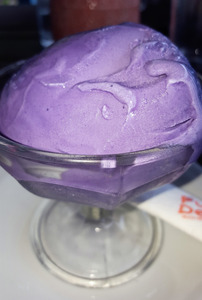 There were some things it’s best not to think about: balut, known as ‘eggs with legs’, as the egg contains an embryo; dog meat; and pik chicken, where the bird is clubbed to death. Filipinos also eat animal parts we wouldn’t, and often the quality of meat served was always not up to UK quality standards. As Italian food was common, it was often a safe bet for me. In fact, Filipinos love fast food, and as well as pizza outlets, Jolibee vied favourably for attention with McDonalds due to higher sugar levels, whilst signs for Chow King, Chooks to Go were everywhere.
There were some things it’s best not to think about: balut, known as ‘eggs with legs’, as the egg contains an embryo; dog meat; and pik chicken, where the bird is clubbed to death. Filipinos also eat animal parts we wouldn’t, and often the quality of meat served was always not up to UK quality standards. As Italian food was common, it was often a safe bet for me. In fact, Filipinos love fast food, and as well as pizza outlets, Jolibee vied favourably for attention with McDonalds due to higher sugar levels, whilst signs for Chow King, Chooks to Go were everywhere.
Bearing in mind the Spanish colonised the Philippines for 300 years, there’s little Spanish influence, but the Americans left a legacy of corned beef, a popular breakfast dish when shredded and heated.
For some reason, plates were not usually cleared at the end of a meal and we were rarely offered dessert or coffee. A popular pudding was gelato and my favourite flavour was the purple coloured ube, made from purple yams. Halo-halo was a more acquired taste: here a variety of sweet items like fruit and coconut are mixed with sweet corn and butter beans, put on shaved ice and drizzled with condensed milk.
Drinks
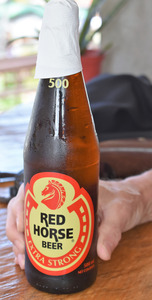 Beer was ubiquitous with San Miguel Pilsen being the most popular but beware the Red Horse at 6.9%. Surprisingly, wine was usually available from 700 to 1500 Peso/£11.66 to £25 a bottle but white was rarely chilled. At beach resorts, the usual favourite cocktails and juices were available whilst at meal times, complimentary ‘service’ water was available, and glasses constantly refreshed. Coffee was surprisingly good but in more off the beaten track places, milk was replaced with crema and we were told that many Filipinos are lactose intolerant (this also meant that yoghurt was scarce at breakfast).
Beer was ubiquitous with San Miguel Pilsen being the most popular but beware the Red Horse at 6.9%. Surprisingly, wine was usually available from 700 to 1500 Peso/£11.66 to £25 a bottle but white was rarely chilled. At beach resorts, the usual favourite cocktails and juices were available whilst at meal times, complimentary ‘service’ water was available, and glasses constantly refreshed. Coffee was surprisingly good but in more off the beaten track places, milk was replaced with crema and we were told that many Filipinos are lactose intolerant (this also meant that yoghurt was scarce at breakfast).
Getting around
Having decided to visit the Philippines, and given the far-flung nature of the country, the next question was how to get around. Although we had a couple of internal flights with Philippine Airlines and AirSWIFT, we travelled extensively by road and ferry which allowed us to see the country. Ferry’s were a mixture of large timetabled ferries to simple private wooden boats with bamboo outriggers.
The local form of public transport is the jeepney, a relic which grew out of old jeeps left by the US military which were customised into what today is a form of mini bus but with individual decorations, messages and designs. They’re not mass produced, although legislation is now moving them in that direction. Having travelled in one, they’re not built for westerners’ height and the long bench seats and high steps are friendly for the more elderly/less agile.
My personal favourite way of travel was a motorised tricycle: a motorbike with side car. They varied depending on the island, but some could take up to four Filipinos in the side car and two on the bike behind the driver.
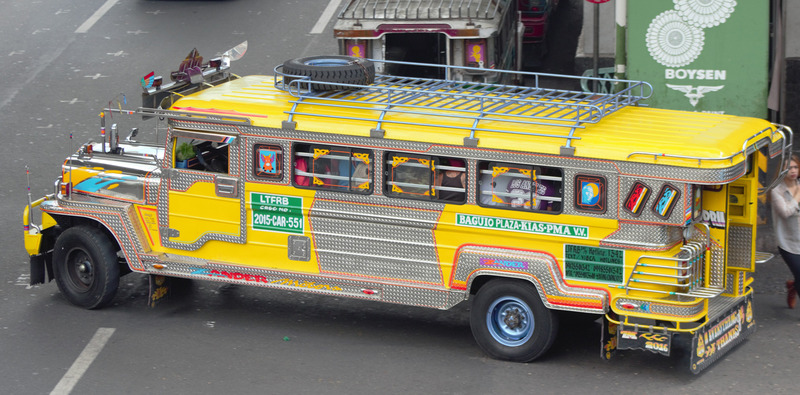
Accommodation
We stayed in a variety of hotels. Some were the best there was in the area (Banaue Hotel and Masferre Inn), others were small or quirky (Celeste and Henry), whilst some just simply disappointed (Bluewater Maribago and Puerto del Sol). However, as we generally only stayed a few nights in each, there was never a major issue.
Sightseeing
Many people view the Philippines as simply a place to snorkel and dive, but we found much more.
Cities
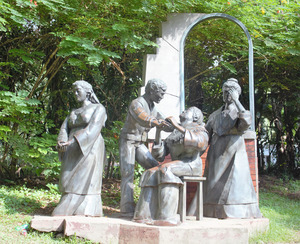 Any visit to the Philippines should include a few nights in Manila, but we also spent time sight-seeing in Cebu City, Baguio and Puerto Princesa, which had their own individual features and history.
Any visit to the Philippines should include a few nights in Manila, but we also spent time sight-seeing in Cebu City, Baguio and Puerto Princesa, which had their own individual features and history.
Nature & wildlife
The Philippines is home to a number of endemic animals and plants and we saw endangered tarsiers at the Tarsier Sanctuary, crocodiles and butterflies in Puerto Princesa, and birds at the Olango Wildlife Sanctuary.
Political history
Although not a natural historian, I was fascinated particularly by the American/Filipino relationship and learned lots with outings to Corregidor Island and Camp John Hay.
Mountains
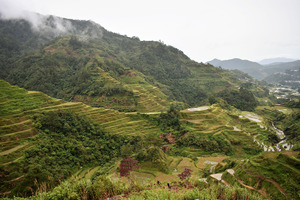 My favourite experiences were hiking the spectacular Ifugao rice terraces of Banaue, although they were physically demanding. The vegetable terraces and strawberry fields around Baguio were equally stunning and fortunately viewed from the top.
My favourite experiences were hiking the spectacular Ifugao rice terraces of Banaue, although they were physically demanding. The vegetable terraces and strawberry fields around Baguio were equally stunning and fortunately viewed from the top.
Volcanoes
There are a significant volume of volcanoes in the Philippines and many of them are active. We decided to view the Taal volcano from the Taal Vista Hotel in Tagatay.
Water experiences
Aside from snorkelling, there are many water-based experiences. We visited the Talipanan and Magdapio waterfalls. The latter was the filming location for the 1970s film, Apocalypse Now. We also visited Baler where the film’s immortal words, ‘Charlie don’t surf’ were uttered. We sailed around the Hundred Islands National Park but unfortunately a trip to the Underground River was cancelled due to Tropical Storm Basyang.
Arts & culture
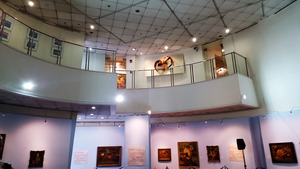 Arts and culture is very important and there were many highlights. I could have spent a day at the BenCab Museum with its eclectic displays of painting and sculptures by one of their feted national artists. Museums were generally small and manageable, and included the Ayala and Yuchengco Museums in Manila, which were both worth a few hours. Large metal sculptures are found in many places and often depict historical events.
Arts and culture is very important and there were many highlights. I could have spent a day at the BenCab Museum with its eclectic displays of painting and sculptures by one of their feted national artists. Museums were generally small and manageable, and included the Ayala and Yuchengco Museums in Manila, which were both worth a few hours. Large metal sculptures are found in many places and often depict historical events.
Shopping
Shopping is never high on my list, but it was interesting to compare the modern, upmarket Greenbelt Mall in Manila with small sari shops which were like corner shops selling everything.
Other sights
We visited other places of interest including the Chocolate Hills and the Hanging Coffins of Sagada.
The beaches
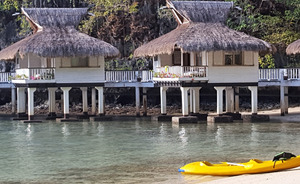 There has been much in the travel news about the growth in popularity of the beaches around Palawan and decided to finish our trip with short visits on the islands of Apulit and Miniloc. Whilst there is no dispute, they look superb with their water cottages, we found the beaches and swimming disappointing.
There has been much in the travel news about the growth in popularity of the beaches around Palawan and decided to finish our trip with short visits on the islands of Apulit and Miniloc. Whilst there is no dispute, they look superb with their water cottages, we found the beaches and swimming disappointing.
And finally
The Philippines is certainly not a short-haul destination, or a particularly easy one, so it makes sense to stretch any trip to make the distance worthwhile. However, considering the cultural history, clash of old and new, the many physical attractions and the fact that it’s still very much a ‘new kid on the western traveller block’, I’d recommend visiting now before it loses its special charm and whilst your legs will still take you up and down the rice terraces!
Silver Travel Advisor recommends Explore and Selective Asia.











